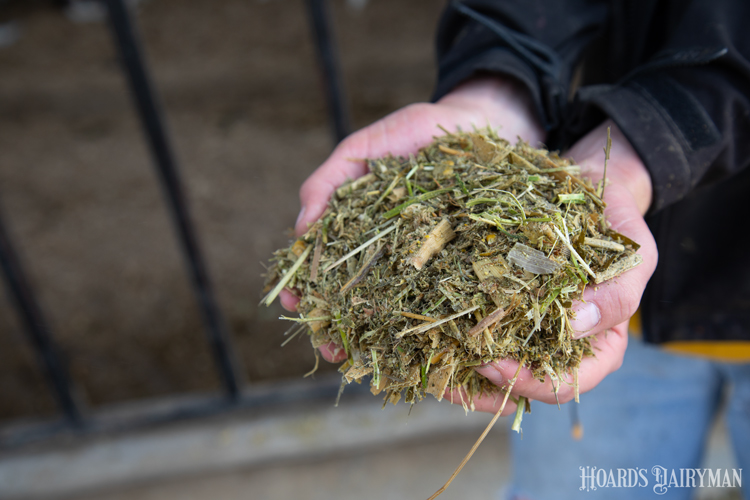
Feed often accounts for half (or more) of a farm’s expenses. That’s why, even among the many aspects of an operation dairy farmers need to keep an eye on, an effective feeding program must be an area of focus.
The challenges that can hinder that are the same no matter the herd size, said Barry Bradford, a professor of animal science at Michigan State University. His team designed an on-farm feeding program evaluation they have already used with 20 farms ranging from 180 to 3,500 cows. While it’s not an evaluation of the diet, it does analyze more than 100 factors that affect how well a herd’s ration is delivered.
During a Cornell Cooperative Extension webinar, Bradford explained that the areas they evaluate fall into six categories: feed mixing, feed hygiene, milk production, safety, feed shrink, and efficiency. Handling those areas poorly leads to wasted time and resources, safety concerns, lost production, health problems, and more consequences.
While it can be useful to get perspective from the farm’s nutritionist or another consultant on feeding systems, Bradford described that having a farm manager focused on feeding cows well made a big difference. There has to be someone dedicated to ensuring feed is mixed safely and accurately, delivered appropriately, and available to the cows.
Plenty of eating time
No matter how well a ration is formulated or mixed, if it isn’t there for cows to consume, they aren’t getting those nutrients. Bradford reminded that we want to give cows about 22 inches of bunk space and three to five hours of eating time daily, made up of six to 10 30-minute meals. If we are feeding to very low or no refusals, it can be difficult to make sure cows have enough feed to meet those targets.
“That really requires excellent management,” Bradford said of feeding for 2% to 3% refusals. Detailed observation or perhaps cameras can help meet this need. But for the most part, Bradford said he has been surprised with how many farms have cows missing meals due to feed access.
The solution is not all about feed pushups, though, he cautioned. First, encourage your entire team to say something if they notice cows are out of feed. It may be useful to have someone on the night shift make note of what they see during those hours. This helps inform feed delivery targets and times.
It is important to push up feed when that energy is most useful, Bradford continued. Consider the timing, diet, cow group, personnel, and equipment when deciding when feed pushups can be optimized. He noted that pushing feed one to two hours after the first feeding of the day can do more benefit than adding more pushups throughout the rest of the day. “Cows are often eating 30% to 40% of their daily meal at the day’s first feeding,” Bradford explained.
Everything mixed well
When it comes to putting the ration together, Bradford noted that shrink has become even more important as feed costs remain elevated. “Compared to 20 years ago, the average management of silage faces is quite good,” he said. However, take care to avoid losing other valuable ingredients or premixes due to wind, rain, snow, and other weather. An enclosed feed center may be able to quickly pay for itself, but there are also other creative ways to avoid leaving feed out in the elements, Bradford encouraged.
Once the ingredients are in the mixer, it’s up to the machine’s knives to get the ration combined and consistent. But this is often an area we don’t evaluate. “Arguably one of the most important pieces of equipment on the farm is hard to look into,” Bradford noted. He advised creating a regular maintenance schedule to make sure knives get maintained and replaced, liners are replaced, and the wagon remains clean enough. “That’s going to end up giving you much better mix quality,” he summarized.
Feeding is complex, but every effort taken to mix a ration completely and ensure cows have sufficient access to it will help make the most out of a dairy’s most significant investment.








